Technology
SOLARI CORPSOLARI DI UDINE SPASOLARI LINEADESIGN
CBS special at TWA Hotel
A TWA Hotel Special, aired by CBS, talks about the split-flap display manufactured by SOLARI DI UDINE SPA.
"Morse wanted everything done right – from the signature clock in the center atrium, to the chili pepper red sunken lounge, to the iconic Solari departure boards, all restored to their original 1962 glory. "We wanted to be historically authentic here," Morse said. Which meant going to Udine, Italy, two hours outside of Venice, where the original board was made 57 years ago. The flip signs (and their distinctive sound) have been a staple of train stations and airports worldwide. Then as now, the sign's 34,000 flaps are created by hand."
 13 MAY 2019
13 MAY 2019
SOLARI DI UDINE SPASOLARI LINEADESIGN
The design of Solari chosen for the office of the future

The Italian design by Solari chosen for one of the biggest and ambitious contract projects of the world. It’s name is Yemeksepeti Foods Park, and it is the new office park of the multinational Turkish food Company. 10.000 sqmt designed by a big architecture firm, Erginoğlu & Çalışlar.
Like a social network of the office life, the big split-flap display by Solari (who were used to display departure and arrival times in airports and stations throughout the world) will enhance the dynamic and collaborative atmosphere of the new office. The display, indeed, will share in real time the number of the orders, company goals and curiosities, such as birthdays of the employees and every day news, interacting directly with the workers.
The aim of the project is to re-design the workplace concept, to transform the closed and aseptic environment in a multifunctional and social oriented space; the designers define the newly built offices as a “workplace, but with the home comforts”: the building hosts bar, game rooms, library, a photo studio, swings, billiard, ping-pong tables, gym, chess room and playstation rooms.
The multinational has requested the analogical support as nostalgic response to the “cold digital screen”, that today is an ineluctable part of our lifes, at home and at work. The unmistakably sound of the updating of the Solari board represent the past, but encompasses also a new meaning for the future. Other international designers chosen the Italian split-flap display for their projects. Listing a few of the latest project: the new Roastery of Starbucks in Seattle, Shanghai, Milan, New York and Tokio, renowned Chefs such Alain Ducasse in the new Champeaux Restaurant, FENDI Man for the Autumn/Winter Collection 2018-2019. Last but not least the Solari board continues to symbolize the time of the traveler, and even the most awaited Hotel of the world will have the reproduction of the ‘60s split-flap display: the new TWA, that at the end of 2018 will reborn as a luxury hotel and business space.
 15 MAY 2018
15 MAY 2018
SOLARI DI UDINE SPA
Solari’s turnover record,
42,7 mln of Euros
.jpg)
The 2016 turnover is approved, with a total amount of the business incoming in 42,7 millions of Euros.
“It is the best turnover since I’m in Solari, even from 1964, when Solari was sold to Pirelli. Thanks to a Company’s mission that looks always forward to innovation and international development: we’re a worlwide Institution for Public Information Systems and for the public transport area.” (Massimo Paniccia)
Many journals have communicated the news throught the media / read the articles by:
Udine today, Rai3 - TG Regione, Ansa, Diario di Udine, Il Nord Est Quotidiano, Agi.it, Corriere del Web, Il Gazzettino, Tiscali News, Il Friuli, etc.


 11 OCTOBER 2017
11 OCTOBER 2017
SOLARI CORPSOLARI DI UDINE SPASOLARI LINEADESIGN
New life to the Saarinen’s iconic TWA Terminal, at JFK Airport
Built in 1962, the shapely building was designed by Eero Saarinen to usher in the Jet Age. Designated a New York City landmark in 1994 and placed on the National Register of Historic Places in 2005, it has been unused for the last 14 years because it couldn’t fit modern aircraft.

However, is going to be given a new life to the terminal —as an hotel. Due to its historic status, the building will be completely restored as it was back in 1962.

One of the main features of the terminal is the split-flap display Solari designed by architect Gino Valle and enclosed into the unmistakable oval shell designed by Eero Saarinen, completely covered with white tiles made by the famous Italian mosaic school of Spilimbergo.
Today, the developers are working with Solari, to produce the flap board exactly as it was 54 years ago, using the authentic split-flap technology developed by Remigio Solari in the 50s.
For further information in regards to the under-construction hotel, below few articles:
USA Today, Galerie Magazine, AirSpace Magazine, The Atlantic, Untapped Cities, Archinect, The New York Times, etc.
 21 APRIL 2017
21 APRIL 2017
SOLARI CORP
SOLARI for the 2nd Avenue Subway in New York City
This technology has replaced the older LED based signs seen at many transit systems throughout the world. This new technology allow for video clips and safety messages to be played along with the traditional count down clock train information seen nearly throughout the transit system. Solaricorp supplied the signage for the recently opened 2nd Avenue Subway which is the newest subway line for the New York City Transit Authority.

This new line was proposed nearly a 100 years ago but due to various economic conditions over the years the project was restarted in earnest about 10 years ago.
The Second Avenue Subway reduces overcrowding and delays on the Lexington Avenue line, improving travel for both city and suburban commuters, and provides better access to mass transit for residents of the far East Side of Manhattan. The line is being built in phases; the first phase of the Second Avenue Subway provides service from 96th St. to 63rd St. as an extension of the Q Line train.
Phase 1 Benefits:
- Serves approximately 200,000 daily riders;
- Decreases crowding on the Lexington Avenue Line by as much as 13%, or 23,500 fewer riders on an average weekday;
- Travel time reduced by 10 minutes or more for many riders traveling from the Upper East Side.
SOLARI DI UDINE. The Company of time since 1725
That of Solari is a story of generations, 300 years long: born in 1725 in Pesariis, a small town in the mountains of Carnia Friuli. A story of beauty, talent and creativity: it was 1956 when Remigio Solari invented the mechanical flip display system… and 10 years later Gino Valle created the new roller with horizontal leaves.Since then that roller is the stylistic characteristic of the company.
“The great power of Solari Udine - said Massimo Paniccia, CEO of Solari - is to have created a technology and a unmistakable design that, after 50 years, can still evoke emotions to people worldwide. I think that is the best recognition that a Company can receive. Indeed, Solari re-launched in production his historical clocks, in order to enter the houses of every passenger, bringing them a little bit of that emotion.”
Today, you can purchase the iconical clocks Cifra 3 and Dator 60, via the all-new online store: store.solarilineadesign.com.
Solari di Udine is the time company: the time of a person, the time of a traveler and of large-scale transport, the time of intelligent cities, the time to serve the community and improve the quality of life.
With the design and production entirely Made in Italy, Solari continues to mark the history of time, industrial clock-making, information display systems for the public, the management of stay areas at the major international hubs.
Solari has currently installed about 3,000 systems of various types worldwide (airports, railways, motorways, public information etc.), which confirms its outright leadership position on the international market.
Is estimated that, with his systems installed worldwide, Solari moves 5 billions of people annually. SOLARI KEEPS THE WORLD MOVING!
SOLARI CORP. NY subsidiary of Solari
Solari Corp is part of the Solari Group; it is a wholly owned subsidiary of SOLARI DI UDINE SPA, established in 2005.
Solari operates inside the USA market since the early years of 60s, for example with the renowned split-flap display, supplied in 1962 for the TWA Terminal inside the JFK Airport of New York, or with the display systems for ABC New York during the American Presidential election in 1964 and 1968.
In January 1966 was established the Solari America Inc. (SAI), appointing Joseph Malady as chief of the Company; this is a demonstration of the culture of Solari, who believes in the power of local collaborators. For over 20 years, Solari America Inc. has worked in the market of Public transportation and of industrial clocks with clients such Port Authority, for the restoration of the public information display for Kansas City or Chicago Airports. In addition, Solari has achieved to be featured inside the Museum of Modern Art of New York, that has included the Cifra 3 - designed by Gino Valle with lettering by Massimo Vignellii - inside his permanent collection.
In 1982, after the Solari Udine’s Company restoration, Solari America subsidiary was closed, entrusting the activities to CDS, Company that was founded by an ex collaborator: Frank Klich, who was first a Technical Director and then an Operative Director. The partnership keep on with great rewards until the 2005, when Frank Klich decided to retire.
Whereupon Solari Udine founded Solari Corp, hiring the CDS’s collaborators to take care of the works into the American market, pursuing the historical spirit of the Company: be actively attended inside the local market. During the firsts years, the American Company worked to ensure the selling of the last technologies, and to keep high the customer care services for the historical clients such LIRR, New Jersey City Transit, Trimet, MTA, Metro North, MBTA Boston, etc.
Nowadays Solari Corp has a little production line, with American specialized operators. The Company strategy aims, in the next years, to strengthen Solari Corp, believing into the American market and into the local human resources.
For more detailed infos in regards to the recently opening of the 2nd Avenue Subway, follow the links below:
Videos.
CBS New York / Second Avenue Subway To Open
Today / NYC's Second Avenue Subway Set To Open After Decades Of Delays
MTA info / Introducing the Second Avenue Subway
Articles.
New York Times, ABC7 NY, MTA, NY Curbed, Il Post, etc.
 21 APRIL 2017
21 APRIL 2017
SOLARI CORPSOLARI DI UDINE SPASOLARI LINEADESIGN
Philadelphia: save the Solari boards

Save the Solari boards. The US are defending the made-in-italy history. The citizens of Philadelphia are saying NO to the dismantling of the old split-flap display that stands into the 30th Street Station: the old analogic display have to make way to his newly digital version.
The departure boards, worldwide symbols of stations, were developed and produced by Solari Udine: Company specialized in Public Information systems. Solari patented during the 60s the split-flap system; In a few years this system became the actual icon of traveling and was adopted and used in every airport and train station, thanks to his unique and unmistakable sound.
The technology changes quickly, and with it the Solari’s Innovation that like 50 years ago is projected to the future: but the Company remain faithful to his history and to the authenticity of his core. In the last years Solari has reproduced the sound and the perfect visualization of the letter that “flips” during the updating of the informations. One of the old split-flap display of Penn Station in New York is already been replaced by a digital one.
The Solari boards are becoming a national case in the US, as much that the biggest newspapers and magazines such Wired, Smithsonian, The Washington Time and CBS wrote about it. Meanwhile was been created even an online petition on change.org and the citizens are tweeting and creating Facebook groups to complain against Amtrak, the National Railroad Passenger Corporation, with an hashtag in common: #savethesign.
One of the US journalists wrote about the Solari’s Displays that “Sounds can take us back in time, into kind of memory time travel”.
“That’s exactly the great power of Solari Udine - said Massimo Paniccia, CEO of Solari - to have created a technology and a unmistakable design that, after 50 years, can still evoke emotions to people worldwide. I think that is the best recognition that a Company can receive.
Indeed, Solari re-launched in production his historical clocks, in order to enter the houses of every passenger, bringing them a little bit of that emotion.”
Still today, indeed, Cifra 3 - the flip clock designed by Gino Valle and worldwide recognized as design icon of the 900s - is part of the permanent collection of MoMA (Museum of Modern Art) in New York, and of the Design Museum of London. It is still entirely produced in a fully artisanal way, without assembly line. From December will be available in Europe, USA, Russia and Japan even onto the online store: www.store.solarilineadesign.com.
Many Magazine and Journalists wrote about the news; following, the list of Articles and the links to in-depth:
Italian Press / La Folla, Semi e Idee, Agi.it, Oggiarte, il Friuliveneziagiulia, Messaggero Veneto, Udine Today, Diario di Udine, Friuli Sera, Friuli.it etc.
Worldwide Press / Times Ledger, Inhabitat, ElleDecor, Archinect, TapInto, Atlasobscura, RunwayGirl, New York Times, Wired, Smithsonian, Metro, Philly, Philly Blog, CityLab, CBS Philly, PhillyVoice, WITF, The Washington Times, PRI etc.
 15 DECEMBER 2016
15 DECEMBER 2016
SOLARI CORPSOLARI DI UDINE SPASOLARI LINEADESIGN
#savethesign
30th Street Station,
The Solari Board will soon
be replaced.
The famous Split-flap display that stands in the middle of the Philadelphia 30th Street Station, produced by Solari di Udine, will soon be replaced by a digital board.
Many Journalists and Magazines wrote about this news, like Wired, Smithsonian, Metro, Philly, Philly Blog, CityLab, CBS Philly, PhillyVoice, WITF, The Washington Times, PRI etc.
The name and popularity of Solari comes from way back in 1725, the year in which the first document records the existence of the Fratelli Solari Company as an “Old and Prized Tower Clocking Industry”. From then on the company’s history is filled with many industrial successes. Believing in the power of an idea and transforming it into success: this is what the two brothers Fermo and Remigio Solari were able to achieve. They established their name worldwide in the fifties, bringing to prominence a company with great potential and bearer of innovative inventions, such as the split-flap system, which revolutionized standard methods of displaying time and information to the public, to the fore.
When the Solari brothers dynasty came to an end, the company management was in the hands of large industrial Groups. The the company property passed on to entrepreneur Dr. Massimo Paniccia who consequently made Solari today’s model of successful economics.
The search for perfection, the desire to reach unique solutions, multi-year experience at the service of every requirement: Solari’s prestige has been founded on these values for almost three centuries. Solari installed over 3000 systems worldwide, by which they move over 5.5 billion people every year.
When the CEO, Massimo Paniccia, had read all the articles and comments about the replacing of the flap board, was pleasantly surprised. “The best wish to the future of Our Company is that, in 40 or 50 years from now, someone in the world will be sad if one of the recently installed public information systems will be dismantled. This is our main focus and the reason of our choices; the search of perfection, both for the client and for the user. I recognize also the meaning and fascination of the displays and flip clocks, design icons throughout the world like the Cifra 3 (Ndr. part of the permanent collection of the London Science Museum, of the MoMA (Museum of Modern Art) in New York and, after November, of the Design Museum of London). Indeed, Solari re-launched in production his historical clocks, in order to enter the houses of every passenger.”
We collected, from Twitter, some comments expressed by the passengers:
come on @amtrak, don't replace the solari board at 30th Street in Philly. it's part of the city and its sound says "welcome home". @6abc
— Kabir Akhtar, ACE (@kabirakhtar) 27 agosto 2016
When function meets form, sometimes nostalgia loses. Are you sad to see Philly's clickety train station delay go? https://t.co/lUsk2aYAHx
— Korn Design (@korndesign) 19 settembre 2016
Can't believe they're getting rid of the sign at @Amtrak 30th Street Station #savethesign everything doesn't have to change 🚂🚂🚂🚂🚂🚉🚉🚉🚉🚉🚉🚉🚉🚉🚉🚉
— Poog (@lbgrant24) 26 agosto 2016
So sad 😢 "Say Bye to Those Awesomely Clackety #Train Station #Displays" | WIRED https://t.co/9GTZeW4xre
— Chaim Haas (@chaimhaas) 28 agosto 2016
Hey followers plz tweet @Amtrak that sight & sound of the Philly 30th St Station flip depart. sign must not be replaced ! #savethesign
— (((Hann23))) (@hann23) 25 agosto 2016
Plans to make new digital screens look and sound like the old: Say Bye to Those Clackety Train Station Displays https://t.co/3cIKG1QgRS
— Jason Cremins (@JasonCremins) 28 agosto 2016
But the Solari board enhances MY travel experience far more than digital! #Philadelphia #Amtrak
— Tony (@tony_pu) 25 agosto 2016
@Amtrak please don't replace the 30th street Philly Solari board. It has history and character
— uustat (@uustat) 31 agosto 2016
Amtrak: Do not replace the 30th Street Station Flipboard - Sign the Petition! https://t.co/LCcUFAGAmj via @Change
— Lizzie B. (@tiniestmonkey) 26 agosto 2016
People also started to share this amazing video, showing the details of the board and a slow-motion of the “clickety-clack” flaps.
You don't want that the Solari board will be replaced? A user created this petition that you can sign / via change.org!
Share your opinion, leave a Comment or write us!
 20 SEPTEMBER 2016
20 SEPTEMBER 2016
SOLARI DI UDINE SPASOLARI LINEADESIGN
The New York Times Style Magazine
"The Clock That Time Cannot Improve"
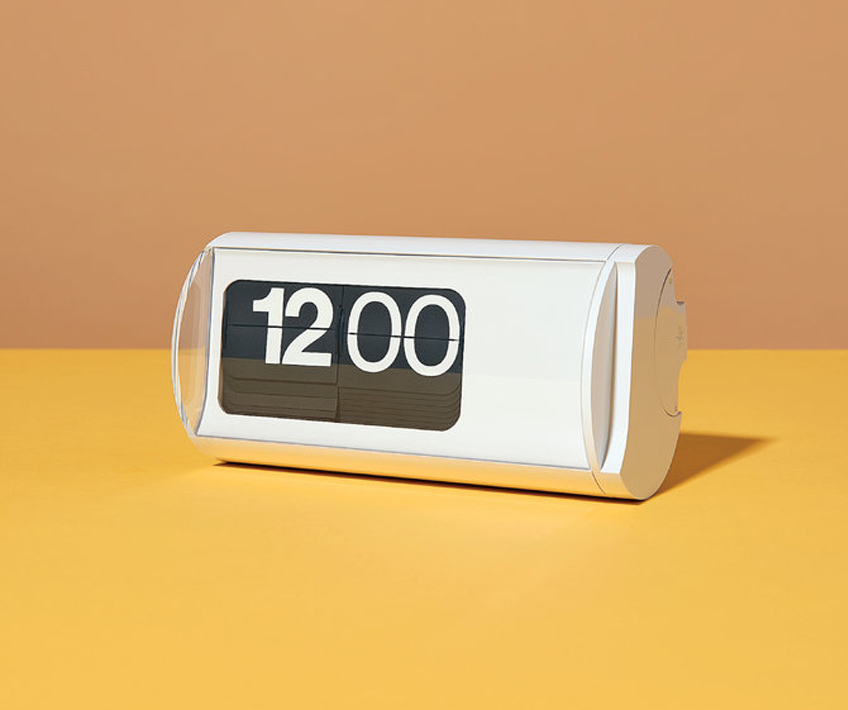
Credit Joshua Scott / The Cifra 3 clock, designed in the mid-’60s by the Italian architect Gino Valle, with numbers designed by Massimo Vignelli.
"Anyone who travels is familiar with the large flip-board displays indicating the gate of your plane, train or bus. Their distinctive shuffling sound, which sends travelers scurrying like a well-orchestrated flash mob, is so synonymous with departure that when Boston’s North Station upgraded its boards to LED displays, they were programmed to emit the familiar clicketyclack, as much for nostalgia as for necessity: How else to get passengers to look up from their phones?
Less familiar — unknown, more likely — is the man responsible for effectively conducting this movement of millions of people for the past 60 years, Remigio Solari. His family’s business had been making clocks for towers in the Dolomites of Northern Italy since 1725. You could say the movement of time was in his blood, or perhaps he had too much of it on his hands, but in the late 1940s, the self-taught engineer had a breakthrough: Rather than hands that move around fixed numbers on a dial, he inscribed the numbers on metal flaps that rotated around a wheel. It was a revelation in terms of clarity, particularly when standing at a distance. In 1956, the first “Solari board” was installed in a train station in Belgium, becoming the worldwide standard for rail and airway travel soon after.
Remigio died in 1957, but his brother Fermo continued his work. With the architect Gino Valle, the Solari company introduced a small electromechanical flip clock, the Cifra 5. While this model won the Compasso d’Oro award at Milan’s International Furniture Fair, it was the Cifra 3, designed in the mid-’60s, which had families everywhere replacing analog clocks with the new technology. The minimalist packaging — a glossy thermoplastic cylinder to accommodate the flaps’ rotation — and the crisp sans serif digits designed by Massimo Vignelli, were soon copied by everyone from General Electric to Hitachi.
I got my own Sony knockoff in 1972. It was the first piece of technology that I fetishized and had to have. Owning it felt somehow like I was invested in the future, or at least a part of it. Later I discovered the source of my so-called digital clock, the Cifra 3, at the Museum of Modern Art in New York, which had added it to its collection in 1966, because it was, and is, “the purest expression of industrial design,” according to senior curator Paola Antonelli.
Then I had to have the real thing and found I wasn’t alone. The clock, discontinued in 1989, had an almost cultlike following, fueling a secondary market among collectors. Solari’s new owners took note and last year put the Cifra 3 back into production at their factory in Udine, where employees continue to assemble it by hand. I was able to get one of the first reissues in Europe (it becomes available in the U.S. this fall), and it now sits, not by my bedside, but on the mantel in my living room, next to other beautiful items, like a midcentury Lucy Rie vase.
Although the Cifra 3 can’t compete with the Solari boards in terms of the number of customers served (the company estimates that it has helped 5.5 billion people navigate trips), it is — like its descendant, the iPod — a potent example of how design can elevate technology."
Special thanks to Tom Delavan / The New York Times Style Magazine
 14 SEPTEMBER 2016
14 SEPTEMBER 2016
SOLARI CORPSOLARI DI UDINE SPASOLARI LINEADESIGN
TWA Terminal, JFK Airport
From an architecture icon
to a boutique hotel
If you have landed at JFK Airport in New York City, you’ve probably seen the Trans World Airlines (TWA) Terminal. Built in 1962, the shapely building was designed by Eero Saarinen to usher in the Jet Age. Designated a New York City landmark in 1994 and placed on the National Register of Historic Places in 2005, it has been unused for the last 14 years because it couldn’t fit modern aircraft.
.jpg)
However, the terminal was going to be given a new life—as a boutique hotel. Due to its historic status, the building’s exterior will remain untouched, but the interior will be given a full makeover.
When renovated, the new 40,000 sqf. facility will have 505 guest rooms, a 10,000 sqf. observation deck, six restaurants, multiple bars (which the original terminal also housed), a fitness center, and conference space.

The building, with its distinctive design, has had its share of memorable pop culture moments. It was featured in Leonardo DiCaprio’s Catch Me If You Can. It also was where the Beatles entered the US for the first time, in 1964.
One of the main features of the terminal is the split-flap display Solari designed by architect Gino Valle and enclosed into the unmistakable oval shell designed by Eero Saarinen, completely covered with white tiles made by the famous italian mosaic school of Spilimbergo.
.png)
In the same year, in 1962, the remote alpha numeric indicator for airports and railway stations of Solari won the Golden Compass, the second after that of 1956 for the design of electro-mechanical clock digits snap, Cifra5
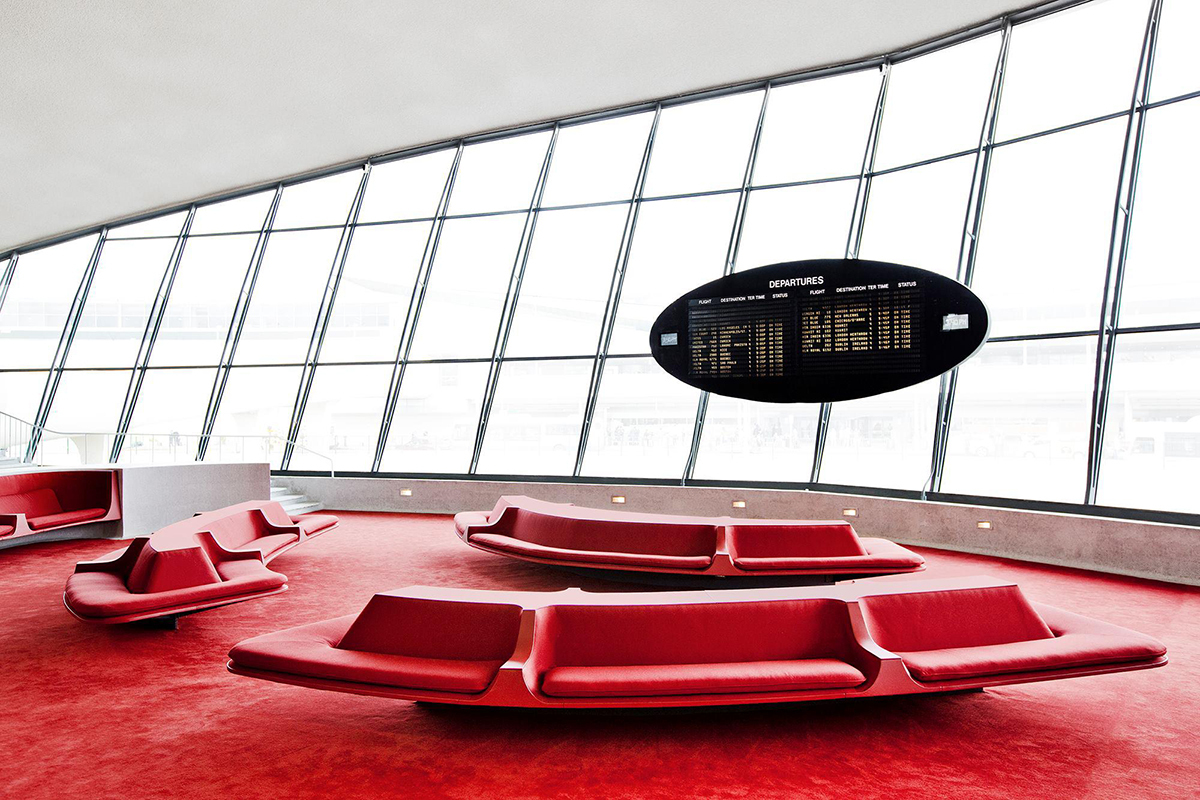
Terminal Detail

Split-flap Display Solari designed by architect Gino Valle
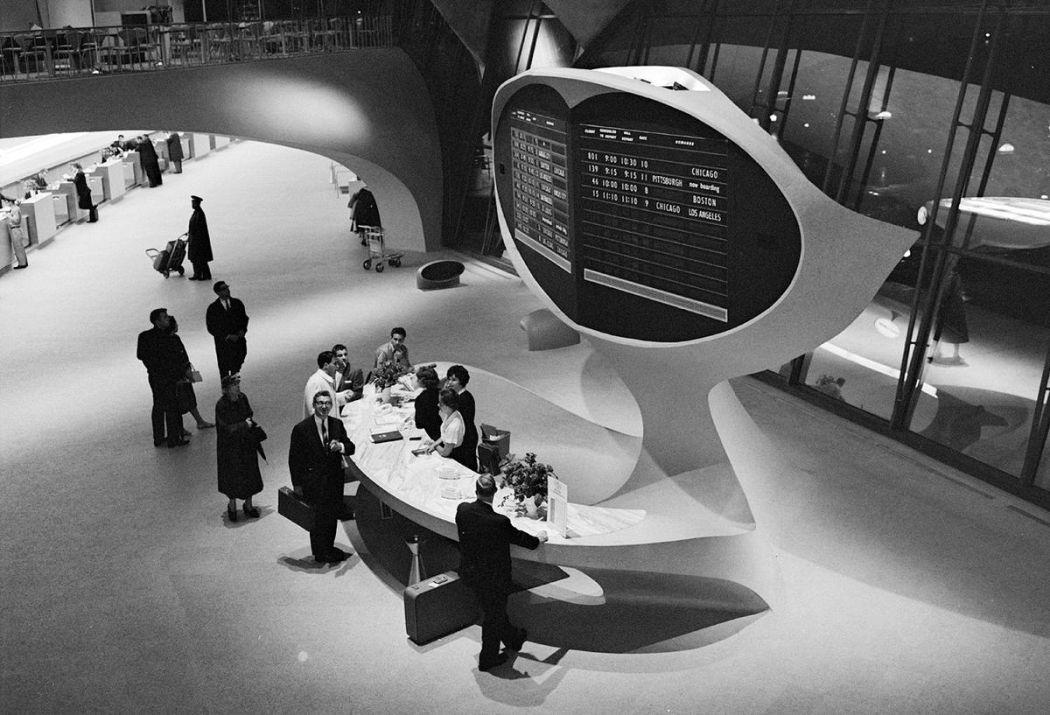
Waiting Lounge with Solari Split-Flap Display

1962 Advertising

2016 Advertising
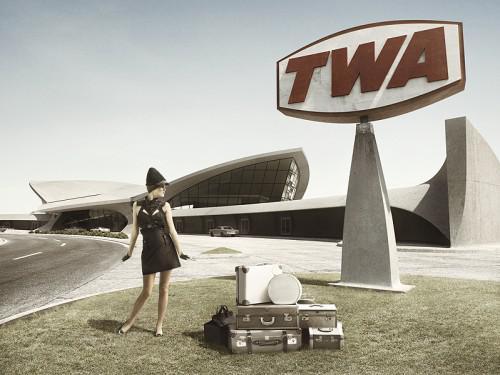


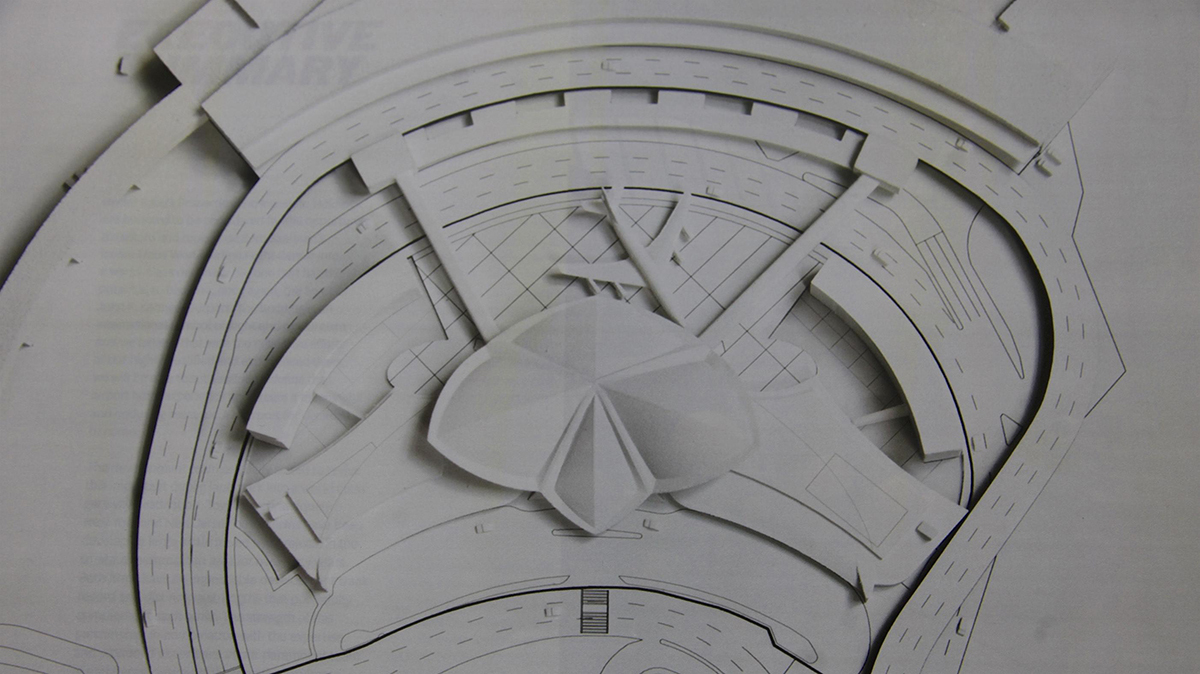
 21 JUNE 2016
21 JUNE 2016
SOLARI DI UDINE SPASOLARI LINEADESIGN
The History of Solari
Solari is an international brand that holds a strong authority in the business of time and industrial clock making. Created in Pesariis, Italy, in 1725, the company was initially known as the “Old and Awarded Tower Clock Company,” but it has managed to tower above that perception with its innovative range of designs.

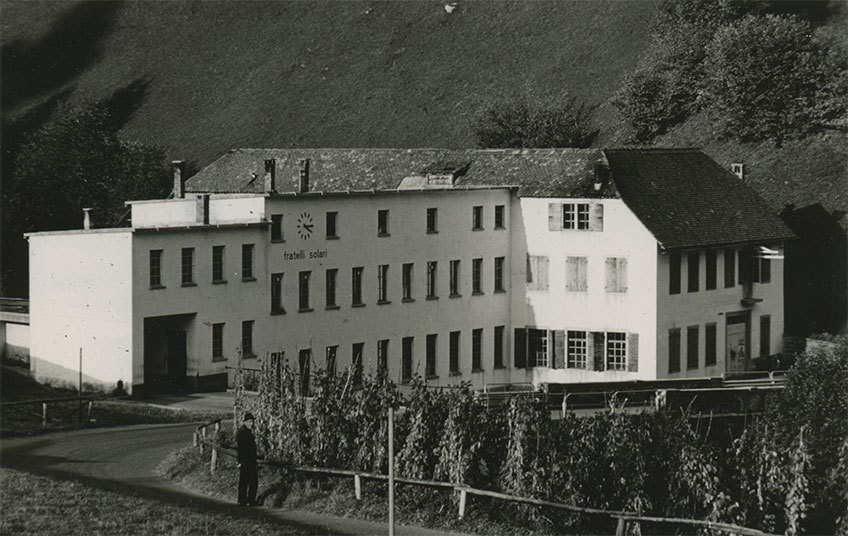
For over two hundred years, Solari continuously redefines how people view and see time, using cutting-edge products and technology that still encompass Solari’s traditional aesthetic, ethos and history, which can be seen all across the world in major transportation hubs today.

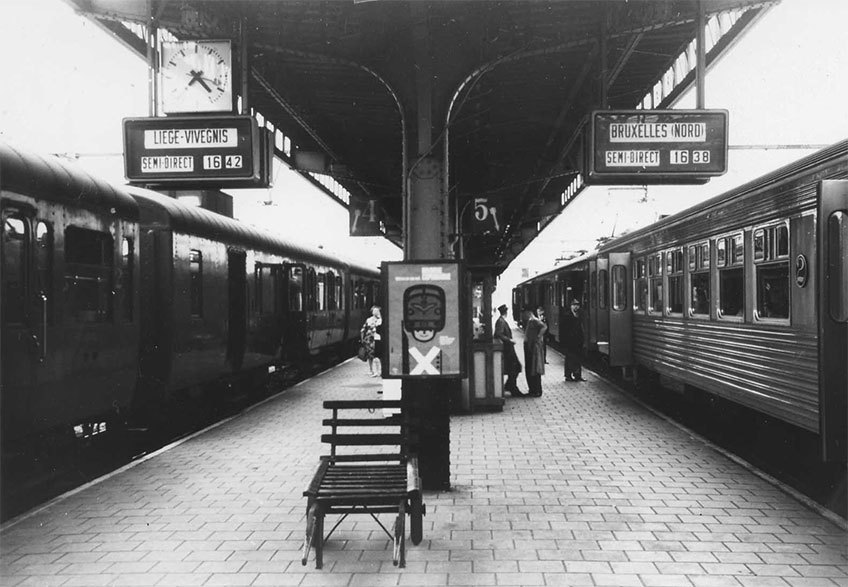

 18 MAY 2016
18 MAY 2016






